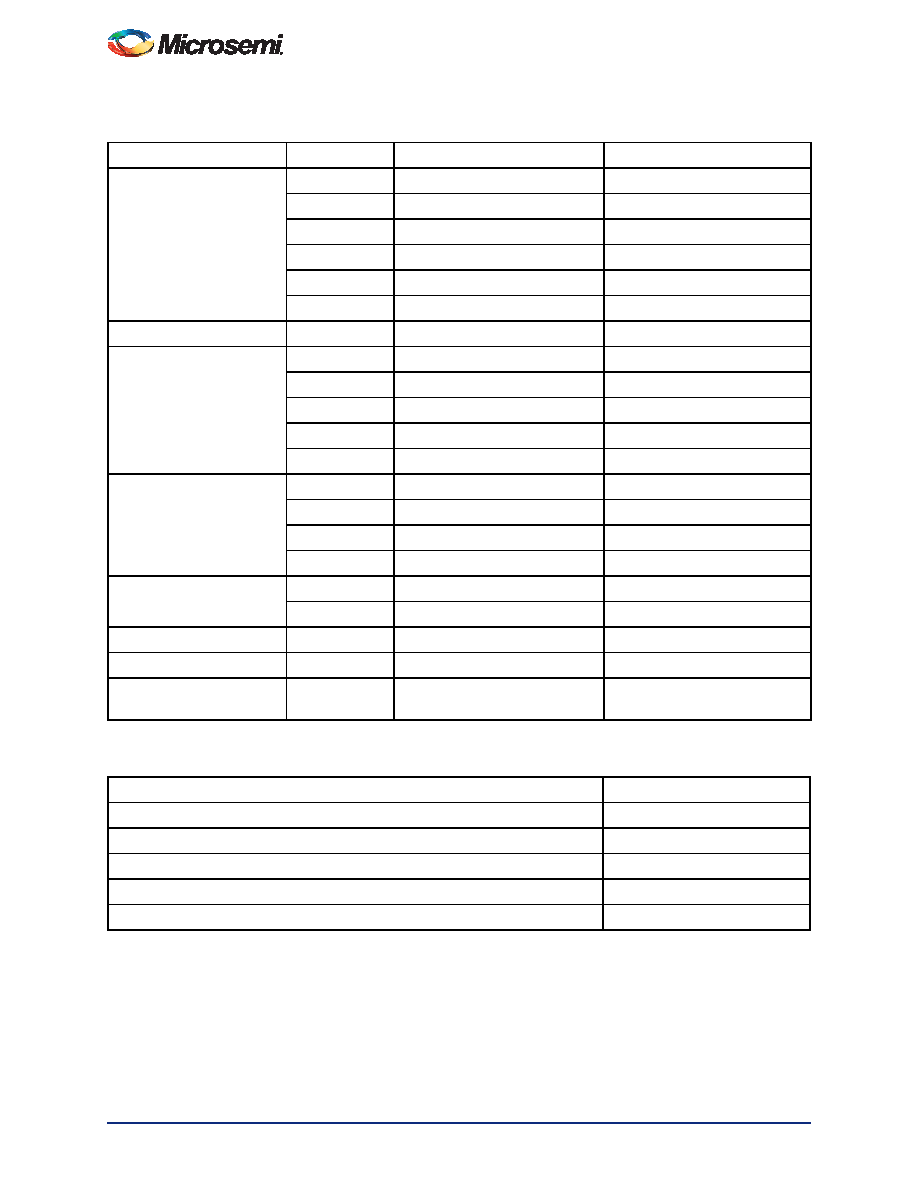- 您現(xiàn)在的位置:買賣IC網(wǎng) > PDF目錄4465 > A3P600L-FG484I (Microsemi SoC)IC FPGA 1KB FLASH 600K 484-FBGA PDF資料下載
參數(shù)資料
| 型號(hào): | A3P600L-FG484I |
| 廠商: | Microsemi SoC |
| 文件頁數(shù): | 195/242頁 |
| 文件大小: | 0K |
| 描述: | IC FPGA 1KB FLASH 600K 484-FBGA |
| 標(biāo)準(zhǔn)包裝: | 40 |
| 系列: | ProASIC3L |
| RAM 位總計(jì): | 110592 |
| 輸入/輸出數(shù): | 235 |
| 門數(shù): | 600000 |
| 電源電壓: | 1.14V ~ 1.575 V |
| 安裝類型: | 表面貼裝 |
| 工作溫度: | -40°C ~ 85°C |
| 封裝/外殼: | 484-BGA |
| 供應(yīng)商設(shè)備封裝: | 484-FPBGA(23x23) |
第1頁第2頁第3頁第4頁第5頁第6頁第7頁第8頁第9頁第10頁第11頁第12頁第13頁第14頁第15頁第16頁第17頁第18頁第19頁第20頁第21頁第22頁第23頁第24頁第25頁第26頁第27頁第28頁第29頁第30頁第31頁第32頁第33頁第34頁第35頁第36頁第37頁第38頁第39頁第40頁第41頁第42頁第43頁第44頁第45頁第46頁第47頁第48頁第49頁第50頁第51頁第52頁第53頁第54頁第55頁第56頁第57頁第58頁第59頁第60頁第61頁第62頁第63頁第64頁第65頁第66頁第67頁第68頁第69頁第70頁第71頁第72頁第73頁第74頁第75頁第76頁第77頁第78頁第79頁第80頁第81頁第82頁第83頁第84頁第85頁第86頁第87頁第88頁第89頁第90頁第91頁第92頁第93頁第94頁第95頁第96頁第97頁第98頁第99頁第100頁第101頁第102頁第103頁第104頁第105頁第106頁第107頁第108頁第109頁第110頁第111頁第112頁第113頁第114頁第115頁第116頁第117頁第118頁第119頁第120頁第121頁第122頁第123頁第124頁第125頁第126頁第127頁第128頁第129頁第130頁第131頁第132頁第133頁第134頁第135頁第136頁第137頁第138頁第139頁第140頁第141頁第142頁第143頁第144頁第145頁第146頁第147頁第148頁第149頁第150頁第151頁第152頁第153頁第154頁第155頁第156頁第157頁第158頁第159頁第160頁第161頁第162頁第163頁第164頁第165頁第166頁第167頁第168頁第169頁第170頁第171頁第172頁第173頁第174頁第175頁第176頁第177頁第178頁第179頁第180頁第181頁第182頁第183頁第184頁第185頁第186頁第187頁第188頁第189頁第190頁第191頁第192頁第193頁第194頁當(dāng)前第195頁第196頁第197頁第198頁第199頁第200頁第201頁第202頁第203頁第204頁第205頁第206頁第207頁第208頁第209頁第210頁第211頁第212頁第213頁第214頁第215頁第216頁第217頁第218頁第219頁第220頁第221頁第222頁第223頁第224頁第225頁第226頁第227頁第228頁第229頁第230頁第231頁第232頁第233頁第234頁第235頁第236頁第237頁第238頁第239頁第240頁第241頁第242頁

ProASIC3L DC and Switching Characteristics
2-40
Revision 13
The length of time an I/O can withstand IOSH/IOSL events depends on the junction temperature. The
reliability data below is based on a 3.3 V, 12 mA I/O setting, which is the worst case for this type of
analysis.
For example, at 100°C, the short current condition would have to be sustained for more than six months
to cause a reliability concern. The I/O design does not contain any short circuit protection, but such
protection would only be needed in extremely prolonged stress conditions.
Table 2-42 I/O Short Currents IOSH/IOSL
Applicable to Standard Plus I/O Banks
Drive Strength
IOSL (mA)*
IOSH (mA)*
3.3 V LVTTL / 3.3 V
LVCMOS
2 mA
25
27
4 mA
25
27
6 mA
51
54
8 mA
51
54
12 mA
103
109
16 mA
103
109
3.3 V LVCMOS Wide Range
100 A
Same as regular 3.3 V LVCMOS Same as regular 3.3 V LVCMOS
2.5 V LVCMOS
2 mA
16
18
4 mA
16
18
6 mA
32
37
8 mA
32
37
12 mA
65
74
1.8 V LVCMOS
2 mA
9
11
4 mA
17
22
6 mA
35
44
8 mA
35
44
1.5 V LVCMOS
2 mA
13
16
4 mA
25
33
1.2 V LVCMOS
2 mA
20
26
1.2 V LVCMOS Wide Range
100 A
20
26
3.3 V PCI/PCI-X
Per PCI/PCI-X
specification
103
109
Note: TJ = 100°C
Table 2-43 Schmitt Trigger Input Hysteresis, Hysteresis Voltage Value (Typ) for Schmitt Mode Input Buffers
Input Buffer Configuration
Hysteresis Value (typ.)
3.3 V LVTTL/LVCMOS/PCI/PCI-X (Schmitt trigger mode)
240 mV
2.5 V LVCMOS (Schmitt trigger mode)
140 mV
1.8 V LVCMOS (Schmitt trigger mode)
80 mV
1.5 V LVCMOS (Schmitt trigger mode)
60 mV
1.2 V LVCMOS (Schmitt trigger mode)
40 mV
相關(guān)PDF資料 |
PDF描述 |
|---|---|
| A3P600L-FGG484I | IC FPGA 1KB FLASH 600K 484-FBGA |
| M1A3P600L-FGG484I | IC FPGA 1KB FLASH 600K 484-FBGA |
| M1A3P600-2FGG484I | IC FPGA 1KB FLASH 600K 484-FBGA |
| M1A3P600-2FG484I | IC FPGA 1KB FLASH 600K 484-FBGA |
| ACB106DHRQ-S621 | CONN EDGECARD EXTEND 212POS .050 |
相關(guān)代理商/技術(shù)參數(shù) |
參數(shù)描述 |
|---|---|
| A3P600L-FGG144 | 功能描述:IC FPGA 1KB FLASH 600K 144-FBGA RoHS:是 類別:集成電路 (IC) >> 嵌入式 - FPGA(現(xiàn)場可編程門陣列) 系列:ProASIC3L 標(biāo)準(zhǔn)包裝:90 系列:ProASIC3 LAB/CLB數(shù):- 邏輯元件/單元數(shù):- RAM 位總計(jì):36864 輸入/輸出數(shù):157 門數(shù):250000 電源電壓:1.425 V ~ 1.575 V 安裝類型:表面貼裝 工作溫度:-40°C ~ 125°C 封裝/外殼:256-LBGA 供應(yīng)商設(shè)備封裝:256-FPBGA(17x17) |
| A3P600L-FGG144I | 功能描述:IC FPGA 1KB FLASH 600K 144-FBGA RoHS:是 類別:集成電路 (IC) >> 嵌入式 - FPGA(現(xiàn)場可編程門陣列) 系列:ProASIC3L 標(biāo)準(zhǔn)包裝:90 系列:ProASIC3 LAB/CLB數(shù):- 邏輯元件/單元數(shù):- RAM 位總計(jì):36864 輸入/輸出數(shù):157 門數(shù):250000 電源電壓:1.425 V ~ 1.575 V 安裝類型:表面貼裝 工作溫度:-40°C ~ 125°C 封裝/外殼:256-LBGA 供應(yīng)商設(shè)備封裝:256-FPBGA(17x17) |
| A3P600L-FGG256 | 功能描述:IC FPGA 1KB FLASH 600K 256-FBGA RoHS:是 類別:集成電路 (IC) >> 嵌入式 - FPGA(現(xiàn)場可編程門陣列) 系列:ProASIC3L 標(biāo)準(zhǔn)包裝:90 系列:ProASIC3 LAB/CLB數(shù):- 邏輯元件/單元數(shù):- RAM 位總計(jì):36864 輸入/輸出數(shù):157 門數(shù):250000 電源電壓:1.425 V ~ 1.575 V 安裝類型:表面貼裝 工作溫度:-40°C ~ 125°C 封裝/外殼:256-LBGA 供應(yīng)商設(shè)備封裝:256-FPBGA(17x17) |
| A3P600L-FGG256I | 功能描述:IC FPGA 1KB FLASH 600K 256-FBGA RoHS:是 類別:集成電路 (IC) >> 嵌入式 - FPGA(現(xiàn)場可編程門陣列) 系列:ProASIC3L 標(biāo)準(zhǔn)包裝:90 系列:ProASIC3 LAB/CLB數(shù):- 邏輯元件/單元數(shù):- RAM 位總計(jì):36864 輸入/輸出數(shù):157 門數(shù):250000 電源電壓:1.425 V ~ 1.575 V 安裝類型:表面貼裝 工作溫度:-40°C ~ 125°C 封裝/外殼:256-LBGA 供應(yīng)商設(shè)備封裝:256-FPBGA(17x17) |
| A3P600L-FGG484 | 功能描述:IC FPGA 1KB FLASH 600K 484-FBGA RoHS:是 類別:集成電路 (IC) >> 嵌入式 - FPGA(現(xiàn)場可編程門陣列) 系列:ProASIC3L 標(biāo)準(zhǔn)包裝:90 系列:ProASIC3 LAB/CLB數(shù):- 邏輯元件/單元數(shù):- RAM 位總計(jì):36864 輸入/輸出數(shù):157 門數(shù):250000 電源電壓:1.425 V ~ 1.575 V 安裝類型:表面貼裝 工作溫度:-40°C ~ 125°C 封裝/外殼:256-LBGA 供應(yīng)商設(shè)備封裝:256-FPBGA(17x17) |
發(fā)布緊急采購,3分鐘左右您將得到回復(fù)。